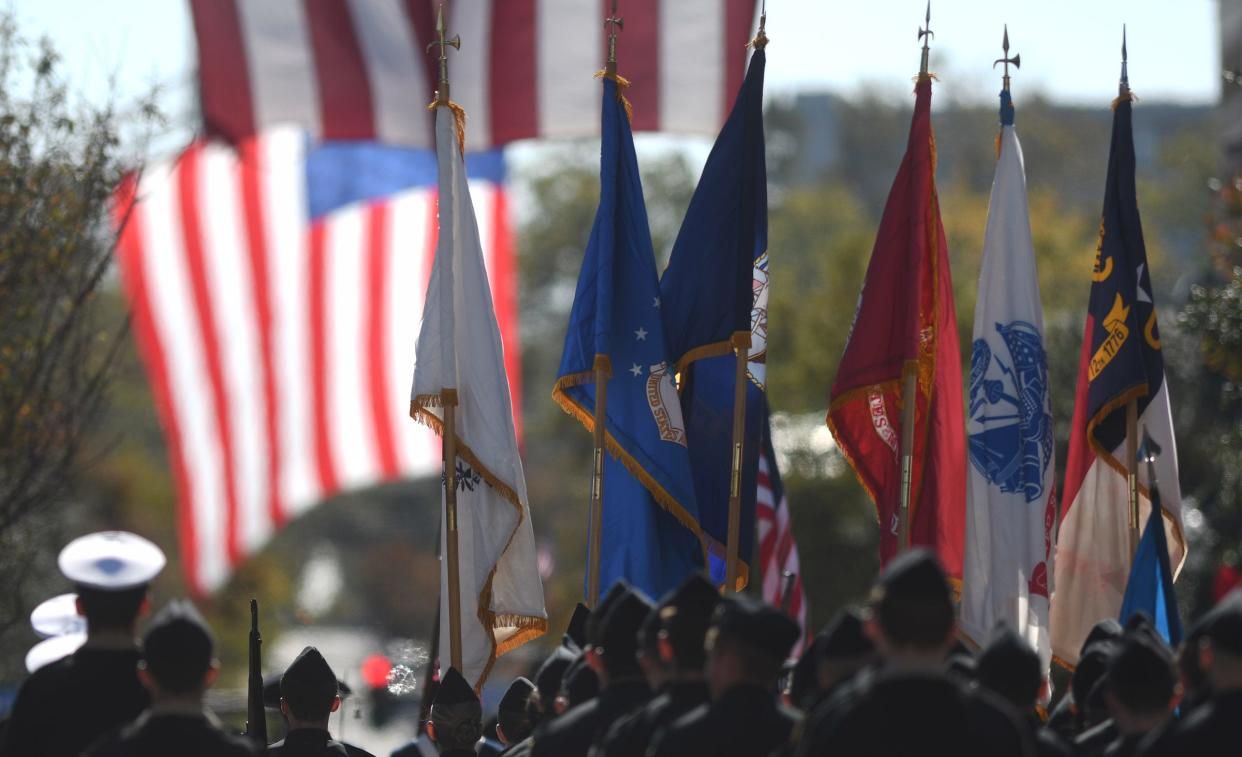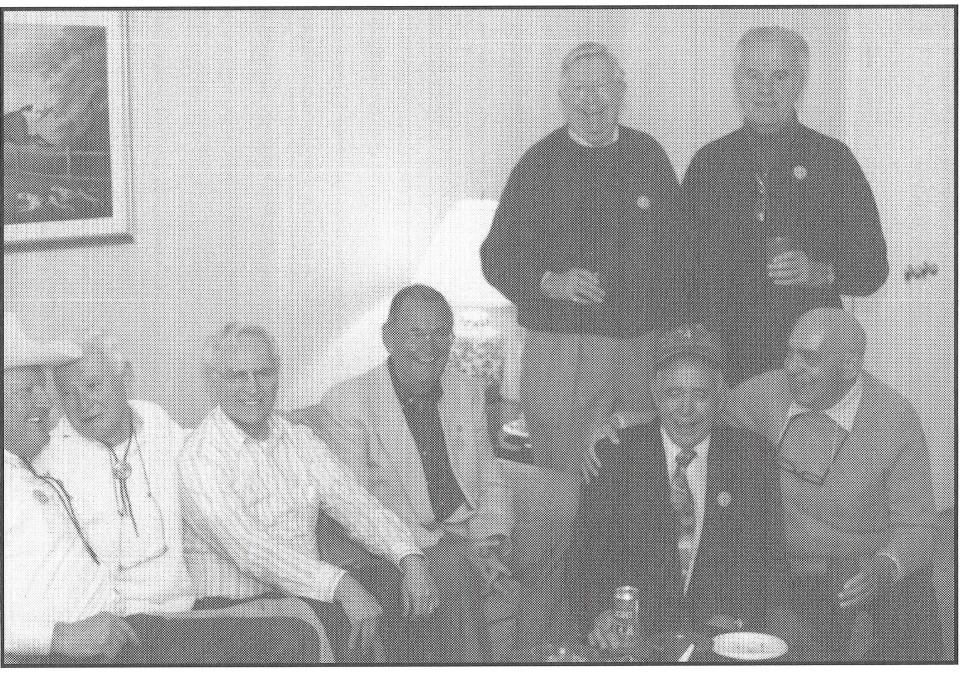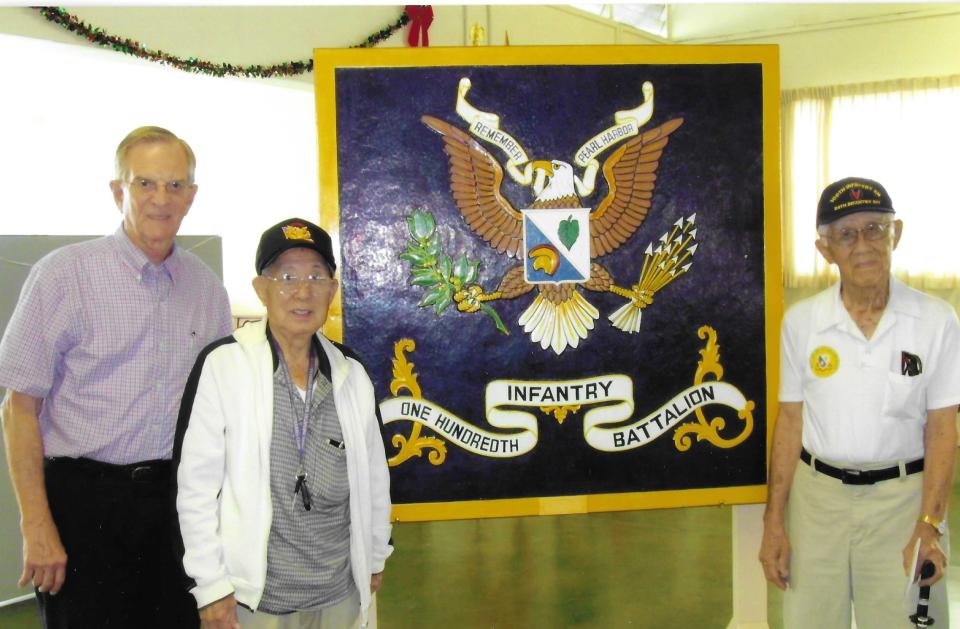Seek out veterans organizations: Thank them, ask questions, hear their stories

In writing military history, I marvel at the patriotism, influence, and dedication of national veterans organizations and unit reunion groups.
Those who served see these organizations as essential for maintaining contact, camaraderie, exchanging memories and stories, and performing community service.
This Veterans Day prompts us to seek out these Americans. Thank them. Ask questions, and hear their remembrances.
Sadly, after 76 years, World War II veterans have nearly vanished. Recently our area lost its final Pearl Harbor Survivor, Navy man Bud Hollenbeck, 99, who fought in the Japanese attack on Dec. 7, 1941.
A media favorite, dear friend, and cohort, Bud joined me in recognizing veterans during annual commemorations. Hampstead’s Andrews Mortuary will inter him on Dec. 28.
Age, health, and 68 years have diminished Korean War veterans. Vietnam veterans have reached their 70s and 80s. But behind them have emerged vigorous groups from Iraq, Afghanistan, and the War on Terror.
Wartime service isn’t a necessary qualification for being a veteran. Honorable service at any time, peace or war, counts.
Revolutionary veterans
After the American Revolution, American and French officers who served in the Continental Army and Navy formed the first veterans organization, the Society of the Cincinnati, for fraternal purposes. It exists today.
Civil War Union Army and Navy survivors, empty for camaraderie, formed the Grand Army of the Republic. Eventually promoting charity and loyalty with a powerful voice, they founded the commemoration of Memorial Day, and met until 1949.

The United Confederate Veterans represented survivors for many years. Other groups evolved after the War of 1812, the Mexican War, and the Spanish-American War.
Myriad organizations
Myriad veterans organizations abound in purposes, types, missions, and outcomes.
We know the prominent national organizations whose projects improved survivor and family care and promoted national defense. Many of them belong to the New Hanover County Veterans Council.
Originally fraternally oriented, some have expanded to service-related projects. Meeting, informing, providing mutual support, and maintaining contact continue as their purposes.
Let’s start with the American Legion, chartered by Congress after World War I. (My father, a Navy veteran and early member of Wilmington’s Post 10, commanded it in 1930). Also the Veterans of Foreign Wars; Disabled American Veterans; Military Order of the Purple Heart; Vietnam Veterans of America; Marine Corps League; and the Iraq and Afghanistan Veterans of America, among others.
Considered fraternal organizations, their goals and successes include advocacy, lobbying, fundraising, scholarships, education, patriotism, the Honor Flights, placement of memorials and monuments, battlefield return tours, and American Legion baseball.
“Gyrene” reunions
How many organizations? Hundreds. Track them via websites. They come and go, WWII ones the latter.
Unit groups of veterans served in homogeneous outfits such as ships, squadrons, regiments, and shore establishments.
My father-in-law commanded a destroyer in heavy Pacific action, earning numerous decorations for both. Their reunion group met every other year for decades, run by children and grandchildren, increasingly the patterns. After attending the 2010 reunion, I noted silence. Likely its dissolving reflected diminishing interest, zeal, time, and no organizer.
For WWII’s 50th anniversary, the Marine Corps gave me a grant to begin writing my book “Gyrene: the World War II United States Marine,” a life-and-culture, human interest study. The Corps lacked adequate historical, personal data and backgrounds on the men who served.
To get close, I attended 10 national reunions of Marine veterans fraternal organizations, including five of the six division associations. Those connections included visits to their battlefields on Saipan, Tinian, Okinawa, and Iwo Jima’s 50th anniversary.
They welcomed me. Old-timers frequently poked that my Navy captain rank equaled a Marine corporal. I laughed. All but one of the division associations allowed me associate membership. From my hundreds of veteran interviews, I believe they opened up to me as a third-party historian, something difficult to do with family.

I dedicated the book to Company F, 2nd Battalion, 25th Marines, 4th Marine Division. As an honorary member, I attended several reunions until the few remaining dissolved the group in 2007 after their organizer died.
The retired Assistant Commandant of the Marine Corps, Medal of Honor recipient Gen. Ray Davis “officially” anointed me an honorary Marine -- and wrote the book’s Foreword. Thus qualifying me to say, “Semper Fi!”
Forest green woollens
Surely every era’s combat veterans experience sensations and conditions which WWII Marines endured. But something magical hit me about those young men who wore the forest green woollens and pale green herringbone twill dungarees, from Parris Island to San Diego, and Guadalcanal to Okinawa.
One absorbed the magic moving among them, listening for hours how Great Depression deprivations influenced their lives – at last, a job – boot camp’s ordeal, their first encounter with indoor toilets, the esprit de corps and foxhole brotherhood, the impact of structure and discipline on their later years.
The emotions intensified while renewing their ultimate glory atop Iwo Jima’s Mount Suribachi, or watching tears recalling a buddy next to them killed during the attack up Saipan’s Hill 500 -- at the very spot where we now stand, they softly reveal.
They had not grown older. Only I had.
Respectfully observing the love and reverence they showed each other after so long, regardless of previous rank or place, and how they honored their departed comrades, notably those left on battlefields won, inspired my work.
Whatever their roots in 1941 or 1944, the survivors were all giants now, from a self-made generation that built postwar America, the likes of which will not pass this way again.
Sadly, but prophetically, the 4th Marine Division Association, heroes of Roi-Namur, Saipan, Tinian, and Iwo Jima, held its final reunion in 2015. They made history. Now they themselves are history.
A note: In producing the HBO miniseries, “The Pacific,” about WWII Marines, the Steven Spielberg team used my book to train actors about the gyrene’s life.
Wilmington native and retired Navy captain Wilbur Jones grew up here during World War II. His 19th book, “The Day I Lost President Ford: Memoir of a Born-and-Bred Carolina Tar Heel,” is released. Read more at wilburjones.com.
This article originally appeared on Wilmington StarNews: This Veterans Day find organizations, thank them and hear their stories

